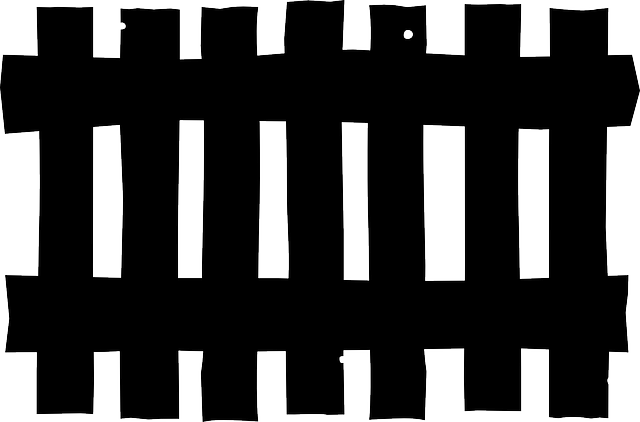DIY Fence Installation Tips for New Bedford, Massachusetts Homeowners
Considering a DIY fence installation? For New Bedford residents, understanding the local landscape and climate is key to successful fence building. This guide provides essential insights into navigating your project seamlessly. From exploring suitable fence options tailored to New Bedford’s conditions to obtaining necessary permits, we equip you with practical tips. Learn about the indispensable tools required and follow our step-by-step process for a sturdy fence. Lastly, discover maintenance routines to ensure longevity. Get ready to transform your outdoor space!
- Understanding Your Fence Options for New Bedford
- Planning and Permitting Your Fence Project
- Essential Tools Needed for Installation
- Step-by-Step Guide to DIY Fence Building
- Maintenance Tips for Longevity of Your Fence
Understanding Your Fence Options for New Bedford
When considering DIY fence installation, New Bedford homeowners have a variety of options to choose from. Wood remains a popular choice for its natural aesthetic and versatility, offering styles like picket or privacy fences. Vinyl is another durable option, known for its low-maintenance requirements and vibrant color selection. Chain link fences provide security without sacrificing visibility, making them ideal for backyards with children or pets. Before beginning your project, research local regulations regarding fence heights and materials to ensure compliance. Additionally, assessing your yard’s unique features—such as sloped terrain or existing trees—will help guide your decision on the type of fence that best fits your New Bedford property.
Planning and Permitting Your Fence Project
Before you begin installing your new fence, it’s crucial to plan and permit your project in New Bedford, Massachusetts. The first step involves assessing your property lines and ensuring that your desired fence placement complies with local regulations. This might require obtaining a survey or consulting with a professional land surveyor. Once you have a clear understanding of where your fence can be installed, it’s time to check with the city or town clerk’s office for any necessary permits. Different municipalities in New Bedford may have distinct requirements regarding fence height, materials, and placement, so it’s important to verify these before proceeding.
Having the proper permits is not just a legal requirement; it also ensures that your project aligns with building codes and safety standards. This step can save you time, money, and potential headaches down the line. Additionally, some projects may require inspections during or after installation, so be prepared for potential delays and communicate with your contractor to ensure a smooth process.
Essential Tools Needed for Installation
When it comes to DIY fence installation, having the right tools is paramount for a successful and efficient project. For New Bedford homeowners taking on this task, here’s what you should consider as essential in your toolkit. Firstly, invest in a good set of hand tools such as a hammer, measuring tape, level, and post-hole digger. These will be your go-to instruments for driving posts, measuring dimensions, ensuring straight lines, and digging holes accurately.
Additionally, power tools like a drill with various bits, circular saw, and string trimmer are invaluable for faster and cleaner cuts, especially when dealing with wooden fence posts and panels. Safety gear is another crucial component; wear protective eyewear, gloves, and ear protection throughout the installation process to mitigate risks associated with tool usage. Lastly, don’t overlook the importance of a sturdy ladder for reaching higher areas and a wheelbarrow or dolly to transport materials around your property.
Step-by-Step Guide to DIY Fence Building
Building a fence can be a rewarding DIY project for New Bedford homeowners looking to enhance their outdoor space. Here’s a straightforward guide to get you started:
1. Plan and Measure: Start by assessing your property lines and deciding on the fence’s location, height, and style. Measure the area accurately to determine the amount of material needed. Create a basic sketch or use online tools for precise measurements.
2. Gather Materials: Based on your measurements, create a shopping list including posts, rails, fencing panels, concrete, tools like post-hole diggers and hammers, and any decorative elements. Head to your local hardware store to gather everything you require. Ensure you have enough material to accommodate any design details or corners.
3. Prepare the Ground: Clear the designated area of plants, trees, or debris. Dig holes for the fence posts, ensuring they are deep enough to provide stability (typically around a third of the post’s height). Pour concrete into the holes and allow it to set completely. This step is crucial for the structural integrity of your fence.
4. Assemble the Fence: Using the rails and brackets, attach the fencing panels to the posts. Ensure each section is secure and level. Consider adding extra support beams or crossbraces for added strength, especially if using lighter materials.
5. Finishing Touches: Once the main structure is complete, paint or stain your fence to match your desired aesthetic. This step not only improves the look but also protects the fence from the elements.
Maintenance Tips for Longevity of Your Fence
Regular maintenance is key to ensuring your fence remains strong and durable for years to come. Start by cleaning the fence at least once a year, removing any debris, leaves, or dirt that might accumulate. Use a soft-bristled brush and mild detergent to gently scrub away grime, then rinse thoroughly with water. This simple step will help prevent rusting and ensure your fence looks its best.
Don’t forget to inspect your fence for any signs of damage or wear and tear. Keep an eye out for loose or missing boards, rusted posts, or broken hinges. Promptly repairing these issues will save you time and money in the long run. Regularly re-stain or paint your fence as well, following the manufacturer’s instructions for optimal protection against the New Bedford climate and potential pests.
